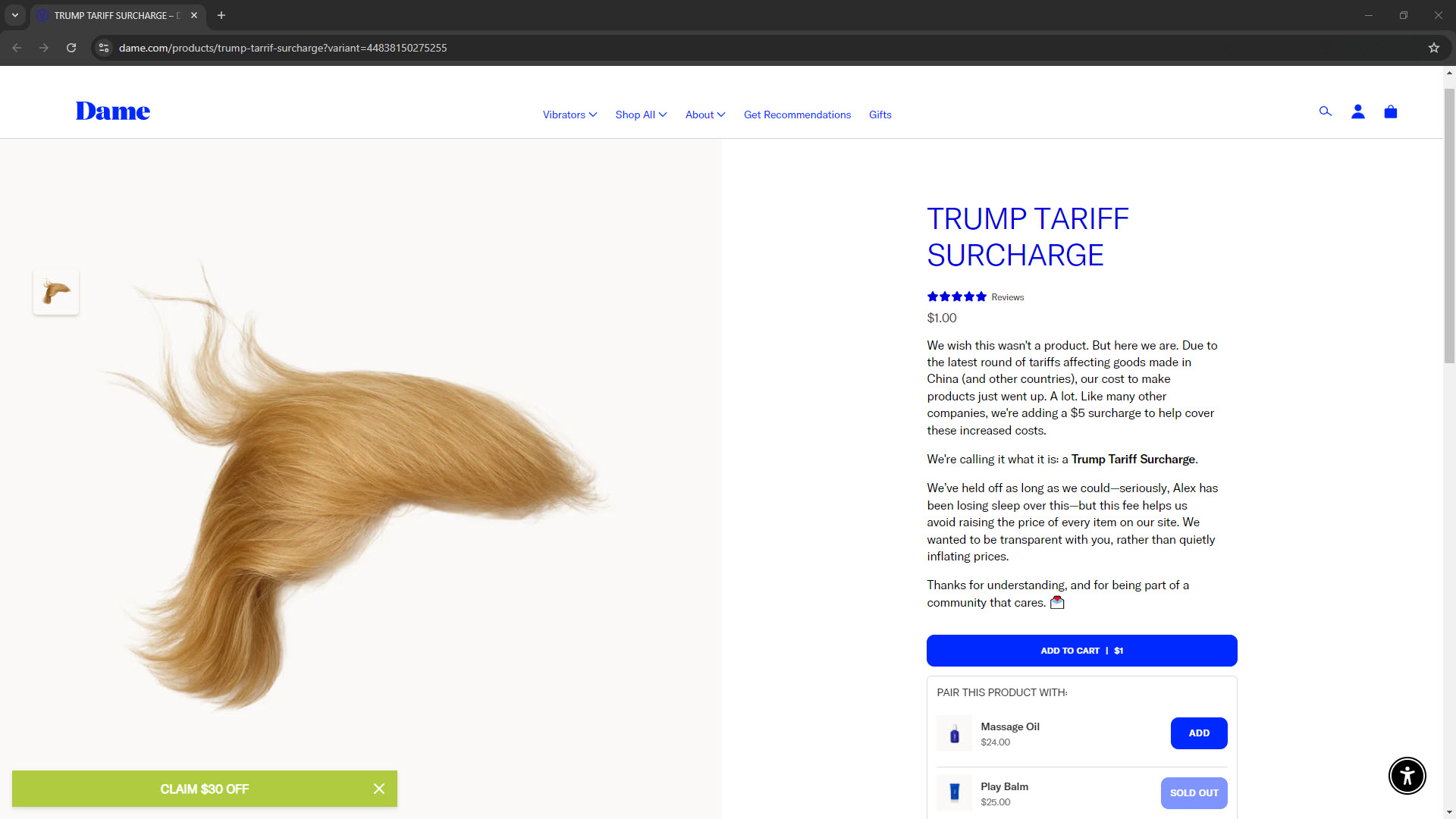There are lots of reasons why companies decide to rebrand, and they’re almost always wrong.


There are lots of reasons why companies decide to rebrand, and they’re almost always wrong.

CBS News’ Megan Cerullo reports that consumers are now facing “tariff surcharges” for some goods as companies pass along costs. To be sure, tariffs are a real concern for businesses and consumers alike. Businesses must adapt to survive, which in this case means either adjusting supply chains to source products from less costly countries, raising prices, or some combination of both. What this moment is NOT is a time to make political points. Whenever companies stick their noses into politics, it rarely ends well.
Enter Dame, a “sexual wellness brand” (a maker of sex toys — no judgment, lets just call it what it is). According to CBS News:

We own a small family restaurant. We’re signed up for deliveries with DoorDash — but I’m sick and tired of DoorDash changing our menus without our permission!
Not all of our items have photos yet. I’ve been working on it little by little, but it’s a big project. We have over 100 items on our menu, plus I’m busy running a fucking restaurant every day, so I don’t have time to add more than a few at a time here or there.
DoorDash however can’t seem to fucking wait. Their answer? Stock photos! This is the 2nd fucking time

For this week’s Stupid Business Decisions Case Study, we look at the watch maker Swatch and their botched attempt to make themselves seem more high-end than they really are. The only thing they DID succeed in was creating a black market for their own products.
At first, it seemed like a cool idea — Swatch decided to partner up with a legit high-end watchmaker, Omega, producing a collaboration called MoonSwatch. In theory, you get the look of an Omega, but for a fraction of the price. The $260 USD selling point is quite a step up for Swatch, who’s previous best sellers were typically in the $50-100 range. (Of course, compared to $6,000 or more for a real Omega, it’s a bargain.)
Swatch did a great job creating “buzz” on social media. Demand for these new watches was already quite high by the time they launched. Crazy long lines formed outside the Swatch stores which had been selected to carry the new series.
Demand was so great, in fact, that Swatch couldn’t fill their shelves fast enough. As a business, that’s a great problem to have. Unfortunately, Swatch decided to handle the intense demand in the worst way possible. They practically asked for a black market to be created. How, you ask? First, let’s look at this notice Swatch posted on their own website: